当前栏目
面试突击:SpringBoot 有几种读取配置文件的方法?
Spring Boot 中读取配置文件有以下 5 种方法:
- 使用 @Value 读取配置文件。
- 使用 @ConfigurationProperties 读取配置文件。
- 使用 Environment 读取配置文件。
- 使用 @PropertySource 读取配置文件。
- 使用原生方式读取配置文件。
它们的具体使用方法如下,为了方便测试,我们在 Spring Boot 配置文件 application.properties 添加以下内容:
profile.name=Spring Boot Profile
profile.desc=Spring Boot Profile Desc.
1.使用 @Value 读取配置文件
使用 @Value 可以读取单个配置项,如下代码所示:
@SpringBootApplication
public class DemoApplication implements InitializingBean {
@Value("${profile.name}")
private String name;
public static void main(String[] args) {
SpringApplication.run(DemoApplication.class, args);
}
@Override
public void afterPropertiesSet() throws Exception {
System.out.println("My Profile Name:" + name);
}
}
以上程序的执行结果如下图所示:
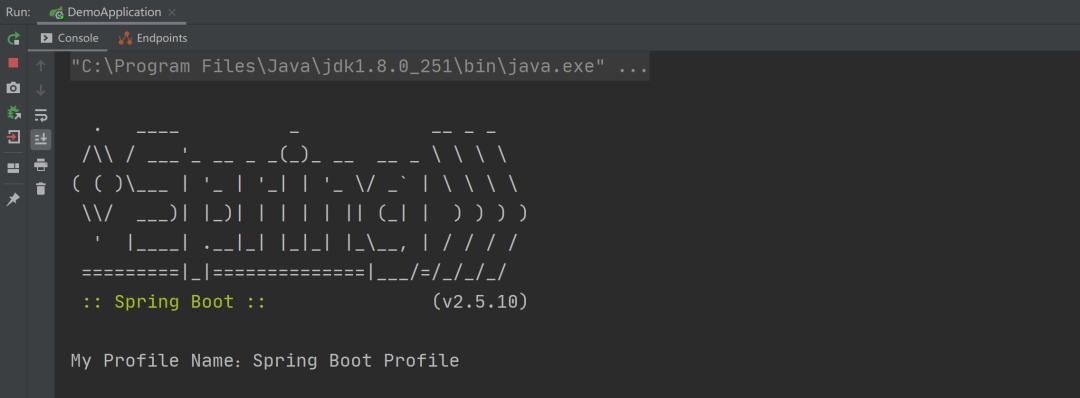
2.使用 @ConfigurationProperties 读取配置文件
@ConfigurationProperties 和 @Value 的使用略微不同,@Value 是读取单个配置项的,而 @ConfigurationProperties 是读取一组配置项的,我们可以使用 @ConfigurationProperties 加实体类读取一组配置项,如下代码所示:
import lombok.Data;
import org.springframework.boot.context.properties.ConfigurationProperties;
import org.springframework.stereotype.Component;
@Component
@ConfigurationProperties(prefix = "profile")
@Data
public class Profile {
private String name;
private String desc;
}
其中 prefix 表示读取一组配置项的根 name,相当于 Java 中的类名,最后再把此配置类,注入到某一个类中就可以使用了,如下代码所示:
@SpringBootApplication
public class DemoApplication implements InitializingBean {
@Autowired
private Profile profile;
public static void main(String[] args) {
SpringApplication.run(DemoApplication.class, args);
}
@Override
public void afterPropertiesSet() throws Exception {
System.out.println("Profile Object:" + profile);
}
}
以上程序的执行结果如下图所示:
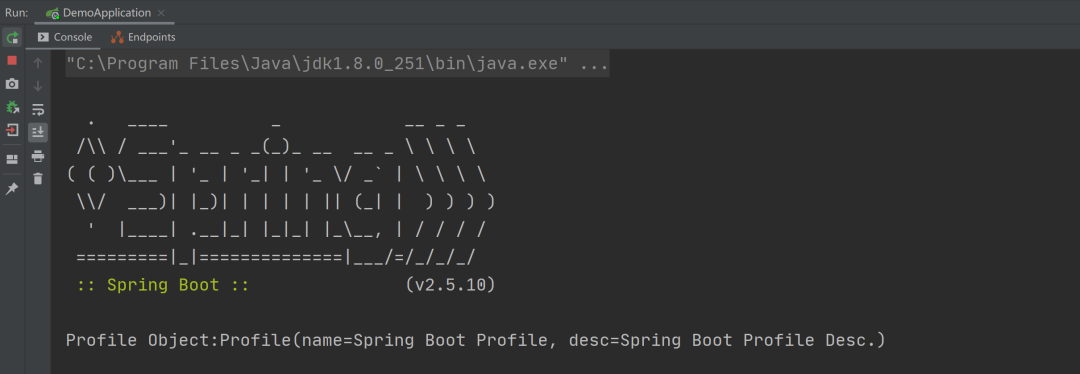
3.使用 Environment 读取配置文件
Environment 是 Spring Core 中的一个用于读取配置文件的类,将此类使用 @Autowired 注入到类中就可以使用它的 getProperty 方法来获取某个配置项的值了,如下代码所示:
import org.springframework.beans.factory.InitializingBean;
import org.springframework.beans.factory.annotation.Autowired;
import org.springframework.boot.SpringApplication;
import org.springframework.boot.autoconfigure.SpringBootApplication;
import org.springframework.core.env.Environment;
@SpringBootApplication
public class DemoApplication implements InitializingBean {
@Autowired
private Environment environment;
public static void main(String[] args) {
SpringApplication.run(DemoApplication.class, args);
}
@Override
public void afterPropertiesSet() throws Exception {
System.out.println("Profile Name:" + environment.getProperty("profile.name"));
}
}
以上程序的执行结果如下图所示:
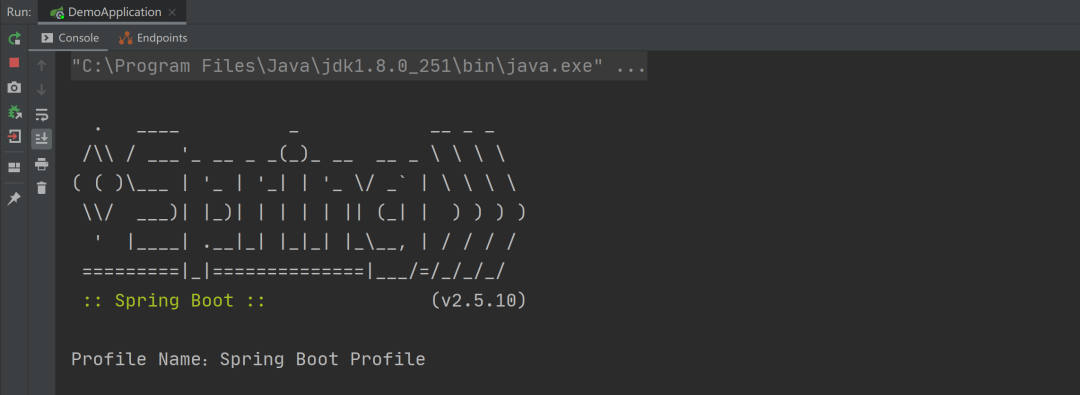
4.使用 @PropertySource 读取配置文件
使用 @PropertySource 注解可以用来指定读取某个配置文件,比如指定读取 application.properties 配置文件的配置内容,具体实现代码如下:
@SpringBootApplication
@PropertySource("classpath:application.properties")
public class DemoApplication implements InitializingBean {
@Value("${profile.name}")
private String name;
public static void main(String[] args) {
SpringApplication.run(DemoApplication.class, args);
}
@Override
public void afterPropertiesSet() throws Exception {
System.out.println("Name:" + name);
}
}
以上程序的执行结果如下图所示:
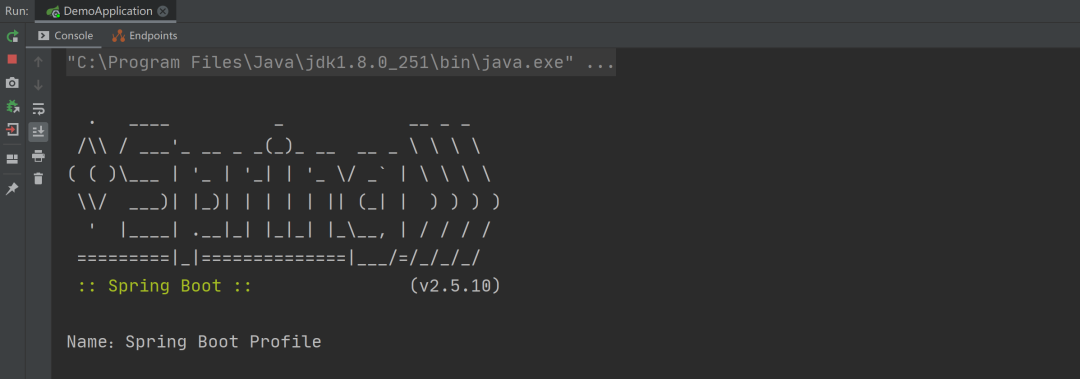
中文乱码
如果配置文件中出现中文乱码的情况,可通过指定编码格式的方式来解决中文乱码的问题,具体实现如下:
@PropertySource(value = "dev.properties", encoding = "utf-8")
注意事项
@PropertySource 注解默认是只支持 properties 格式配置文件的读取的。
5.使用原生方式读取配置文件
我们还可以使用最原始的方式 Properties 对象来读取配置文件,如下代码所示:
import org.springframework.beans.factory.InitializingBean;
import org.springframework.boot.SpringApplication;
import org.springframework.boot.autoconfigure.SpringBootApplication;
import java.io.IOException;
import java.io.InputStreamReader;
import java.nio.charset.StandardCharsets;
import java.util.Properties;
@SpringBootApplication
public class DemoApplication implements InitializingBean {
public static void main(String[] args) {
SpringApplication.run(DemoApplication.class, args);
}
@Override
public void afterPropertiesSet() throws Exception {
Properties props = new Properties();
try {
InputStreamReader inputStreamReader = new InputStreamReader(
this.getClass().getClassLoader().getResourceAsStream("application.properties"),
StandardCharsets.UTF_8);
props.load(inputStreamReader);
} catch (IOException e1) {
System.out.println(e1);
}
System.out.println("Properties Name:" + props.getProperty("profile.name"));
}
}
以上程序的执行结果如下图所示:
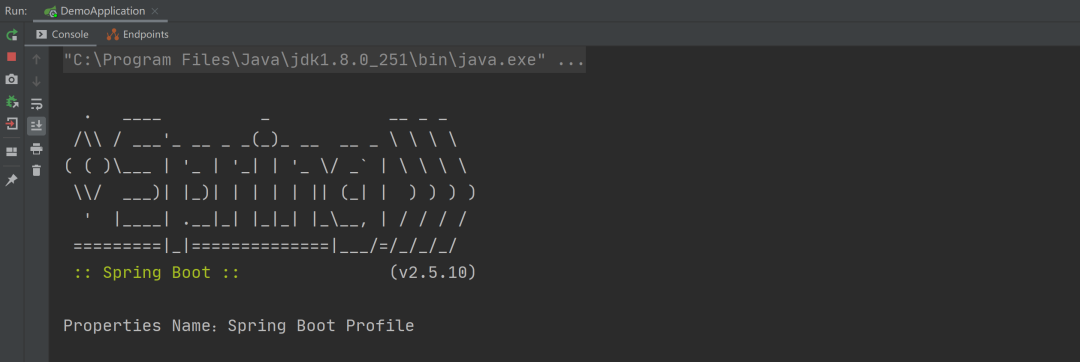
总结
在 Spring Boot 中读取配置文件有以下 5 种方法:
- 使用 @Value 读取配置文件。
- 使用 @ConfigurationProperties 读取配置文件。
- 使用 @PropertySource 读取配置文件。
- 使用 Environment 读取配置文件。
- 使用原生方式读取配置文件。
其中最常用的是前 3 种,如果读取某一个配置项可使用 @Value,如果读取一组配置项可使用 @ConfigurationProperties,如果要指定读取某一个具体的配置文件可使用 @PropertySource 来指定。
相关文章
- JDK中内嵌JS引擎介绍及使用
- 49195,npm最后的疯狂?盘点10款最有前途JavaScript构建工具
- 译文:5个增强Node.js应用程序增强功能
- 4个例子,吃透 JavaScript 实现的二叉搜索树 BST
- Vue中使用XML和JSON格式互转插件
- JDK中Jshell简单使用(JDK9版本以上或者JDK9版本)
- shiro中的JSP标签支持
- Java技术点-json转对象,对象转json
- SpringBoot+SpringDataJpa @Query之 JPQL使用书写模板(模糊查询and条件查询)
- Spring Boot中的Freemarker模版引擎引用css和js的正确姿势
- Node.js解压版的环境配置及相关常用命令
- JSP学习笔记(6)—— 自定义MVC框架
- JSP学习笔记(5)——Servlet、监听器、过滤器、MVC模式介绍
- Jsp学习笔记(4)——分页查询
- APIJSON简单使用
- JSP学习笔记(3)——JSTL 标签库
- JSP学习笔记(1)——Jsp指令、动作元素和内置对象
- JavaScript ES6 Promise对象
- Web前端——JavaScript扩展补充
- Web前端——表单提交和Js添加选项

